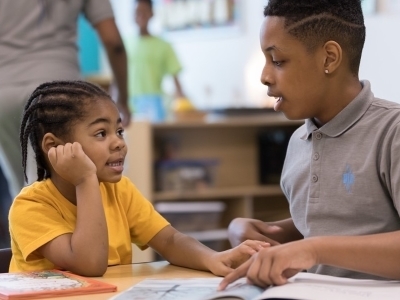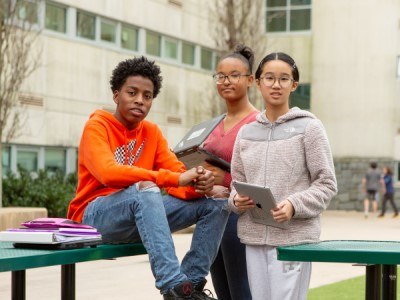Creating Space
Topics

Educators are rethinking the purposes, forms, and nature of assessment. Beyond testing mastery of traditional content knowledge—an essential task, but not nearly sufficient—educators are designing assessment for learning as an integral part of the learning process.
If we want good things to happen in K-12 education, we have to create space for them. And creating space isn’t easy.
Like most people I know, I’m deep into the World Cup right now. There’s so much I love about soccer, but my favorite thing is that games often turn on where the ball isn’t. You can actually watch green space shift and move around the pitch as a match unfolds. When a team is struggling, the space looks cramped and static. But when a team is flowing and in sync, the space seems elastic, stretching and rebounding in an eye blink. The players can read it, and anticipate where it’s going to be. The highlights will show a final touch on the ball, but more often than not the space opened first.
Aaaand...segue: if we want good things to happen, we have to create space for them. And creating space isn’t easy.
Since launching the Workshop School five-plus years ago, we’ve spent countless hours thinking about what skills are most important for students to develop, how we help them do so, and how we measure their progress. Our approach has evolved, but in general, we’ve focused on assessing student work in terms of product and process. The former focuses on the quality of what a student produces, the latter concerned with how they go about producing it.
We know that grades, or ratings, aren’t enough. Students need feedback that guides improvement. We also know that self-assessment is probably just as important as teacher assessment in helping students take ownership and internalize high standards.
We took all of these well-founded and well-reasoned beliefs and baked them into WorkSIS, our in-house project design and assessment system. We built in a feature where teachers designed rubrics right in the system, and the criteria they set pushed directly to student dashboards. We allowed for them to add qualitative feedback into those rubrics and post it to students, even if they hadn’t graded the work yet. We developed a ‘notes’ feature to allow any teacher in the school to share feedback with students through a central interface on their dashboard. We allowed students to self-assess, with their comments pushing to teacher dashboards so they could be reviewed when teachers offered their feedback.
None of it worked.
At its most basic, an assessment system is a feedback loop. What we quickly learned was that teachers weren’t updating and posting grades or feedback in the system with any regularity, which meant students weren’t looking at their dashboards, which meant there was no feedback loop. We had created an elaborate accounting sheet.
In hindsight, we made two critical mistakes. First, we made the system too complex, which made it error-prone, which slowed it down and bred frustration among users. Second, and more importantly, we made it a pain in the neck to use. There were too many different steps a teacher had to take to use all of the system’s functions, which dramatically slowed down the process of reviewing and evaluating student work. Maybe if assessment was the only thing we were prioritizing, the burden would have been bearable. But when we’re also thinking about project design, outside partnerships, trauma-informed and restorative practices, parent engagement, and a half-dozen other things, creating a system that demanded so many distinct steps was folly. We crowded the space.
Everyone was frustrated. After a fair amount of hand-wringing, we backed up to a couple of fundamental questions:
- How do we clearly prioritize and communicate the skills we value most?
- How do we create tight feedback loops that reinforce these priorities and show students where they are in real time?
This led us to a question that ran counter to our previous development work: what doesn’t need to live in WorkSIS? What can we strip out to make it simpler, faster, and more reliable? We’ve landed on a streamlined system that has almost no qualitative data in it at all, one that requires far fewer touchpoints to update. There are two big bets we’re making about how this will work. First, by making it faster and easier, we’re betting that dashboards will be updated far more frequently, tightening the feedback loop and reinforcing the skills we value. And second, by taking qualitative feedback out of the system, we’re actually making it easier for teachers to give it in a way that guides students toward improvement. We are creating space for the good things we want to happen.
All of this requires a high level of trust. We’re making these changes because our staff told us the existing one wasn’t working. We’re iterating based on what they’ve told us they want, and we’re trusting them to give students timely, high-quality feedback outside the strictures of a formal system. If we were a more top-down organization, maybe our approach would have focused on how to make teachers use a flawed system. (The majority of school districts I’ve been in, including Philadelphia, operate this way.) But next gen learning is, by definition, a work in progress. Our job is to create the space to grow, struggle, and learn together.




